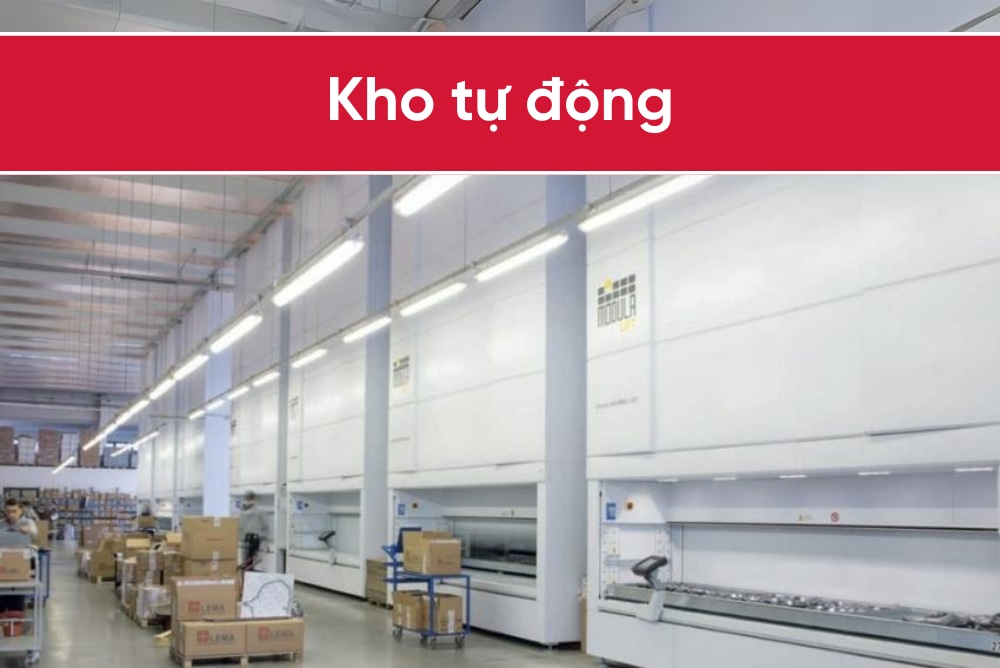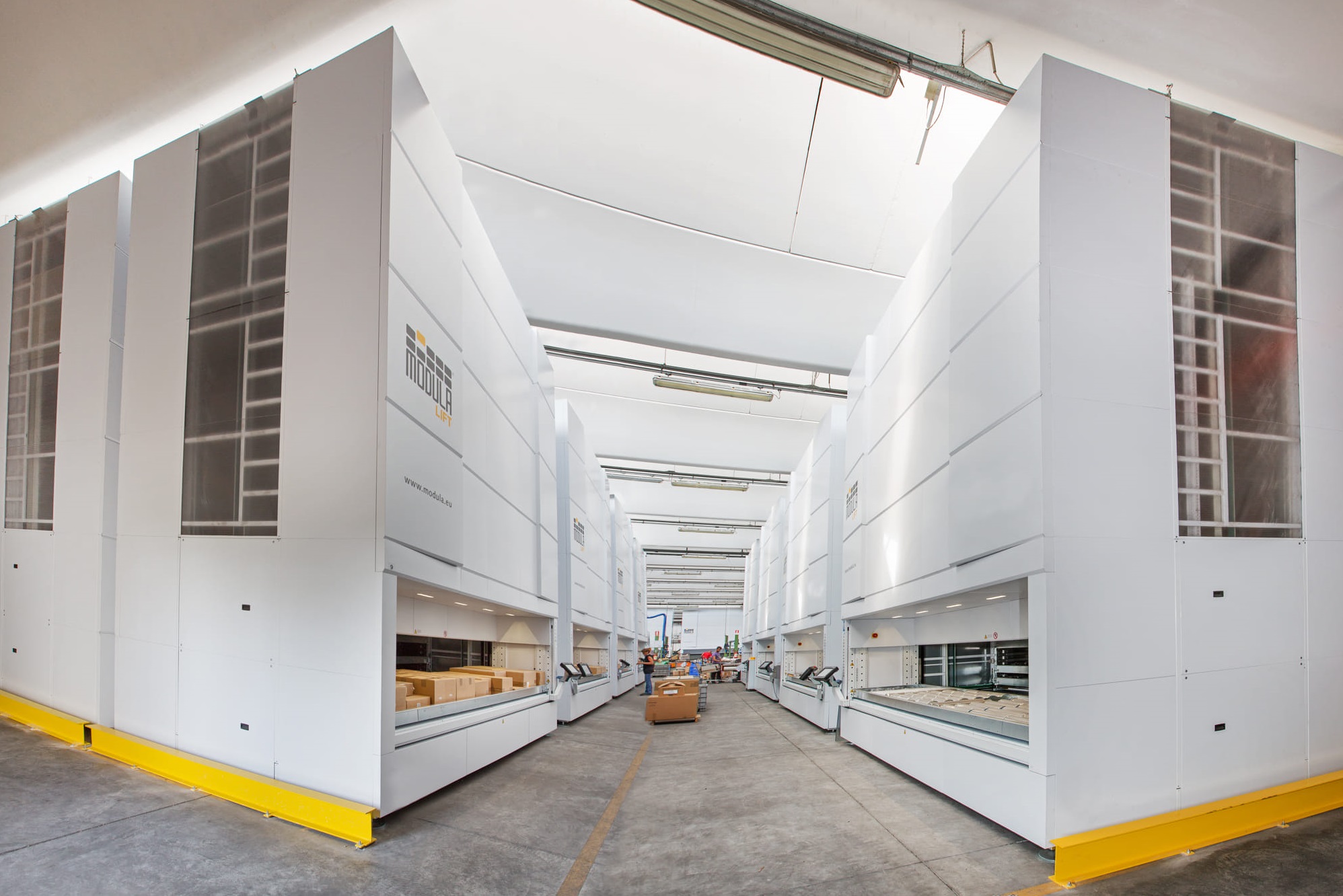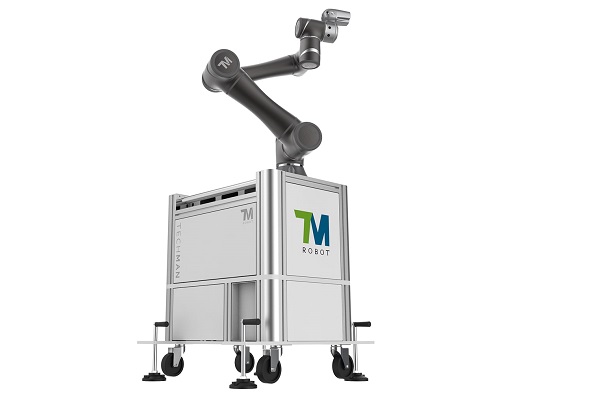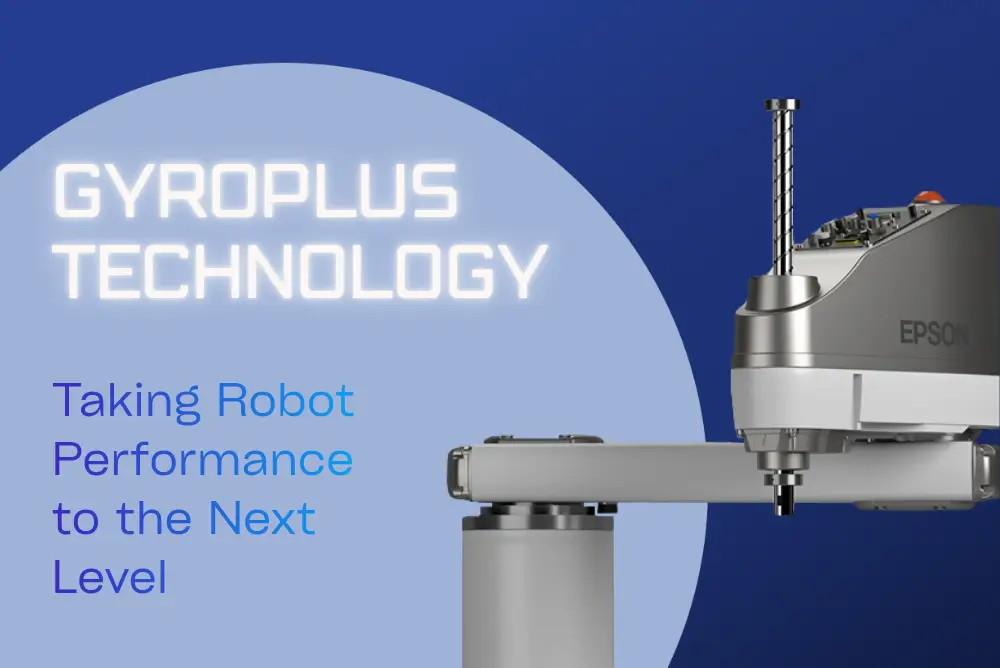Automated warehouses are becoming a crucial solution for optimizing operational processes and managing goods in modern industries. This article clarifies the concept of automated warehouses and outlines 3 ways to select reliable providers of automated warehouses, assisting businesses in deploying or upgrading their automated warehouse systems.
What is an automated warehouse?
An automated warehouse (also known as a smart warehouse) is a storage and goods management system fully automated through technology and robots, optimizing processes of importation, storage, and distribution of goods within industrial or logistics environments. This system utilizes automated devices such as Autonomous Mobile Robots (AMRs), sensor systems, and software to perform tasks that were previously reliant on human labor.
Automated warehouse (Image source: Modula)
Why choose an automated warehouse?
Automated warehouses offer numerous significant benefits in warehouse management and operations:
- Enhanced efficiency: Boost operational efficiency, reduce handling and storage times, and improve import-export processes.
- Error reduction: Minimize errors caused by human factors, lower labor costs, and enhance accuracy and reliability in goods management.
- Increased flexibility: Automated warehouses can swiftly adapt to market changes, diverse product requirements, and short delivery times.
- Space optimization: Efficiently utilize warehouse space, and optimize arrangement and storage of goods.
- Meeting diverse customer needs: Strengthen responsiveness to customer demands, enhancing customer relationships and satisfaction.
- Cost efficiency: Despite requiring significant initial investment, automated warehouses can help reduce operational costs, maintenance expenses, and labor costs in the long run.
Operation of an automated warehouse
| Receiving goods |
|
| Goods Storage |
|
| Order fulfillment |
|
| Goods transportation |
|
3 common types of automated warehouses today
Vertical automated warehouse
- Advantages: Efficient use of storage space by storing goods in multiple levels, saving floor space.
- Applications: Suitable for storing small-sized and lightweight products, especially in industries with diverse product ranges.
Vertical automated warehouse (Image source: Modula)
Horizontal automated warehouse
- Advantages: Ensures convenience and speed in the picking and placing process, reduces operational time.
- Applications: Ideal for storing goods that require frequent access, optimizing operational and distribution processes.
Horizontal automated warehouse (Image source: Modula)
Combined automated warehouse
- Advantages: Combines the benefits of both vertical and horizontal warehouses, providing flexibility and high efficiency.
- Applications: Suitable for businesses needing to store a variety of goods, from small to large items, and requiring flexibility in storage and inventory processes.
Common FAQs about automated warehouses
5.1. Is an automated warehouse suitable for all types of businesses?
Automated warehouses can cater to a wide range of businesses, from small to large, but careful analysis of the business's needs and investment capability is required.
5.2. How long does it take to deploy an automated warehouse system?
The deployment process depends on the scale and specific requirements. From design and integration to testing and implementation, the timeline can range from several months to a year depending on project complexity.
5.3. What are the costs associated with deploying and operating an automated warehouse?
Costs for deployment and operation vary based on factors such as scale, technology used, and specific requirements. Expenses include installation costs, materials, labor, and maintenance costs.
5.4. How well does an automated warehouse integrate with inventory management systems and other operational processes?
Automated warehouse systems typically integrate well with inventory management systems and operational processes through standard protocols and software.
5.5. What factors should be considered when selecting a supplier for an automated warehouse?
- Compatibility: The supplier should be capable of integrating the automated warehouse system with other management systems within the business.
- Technology and products: The supplier should provide solutions using advanced technology and flexible, customizable products that meet specific business needs. A notable example of such a reputable partner is Temas - enhancing current factory productivity and meeting future visions.
- Standard certifications: Verify if the supplier has certifications and adheres to safety, quality, and security standards.
- Deployment and operational costs: The supplier of automated warehouses should offer pricing that aligns with budgets and delivers value in system deployment and operation.
- Customization and scalability: The products supplied should have customization capabilities to meet specific business needs and be scalable for future expansion.
- Support and maintenance services: Post-sale technical support and maintenance services are crucial to ensuring continuous operation and high system performance.


 Read more
Read more



